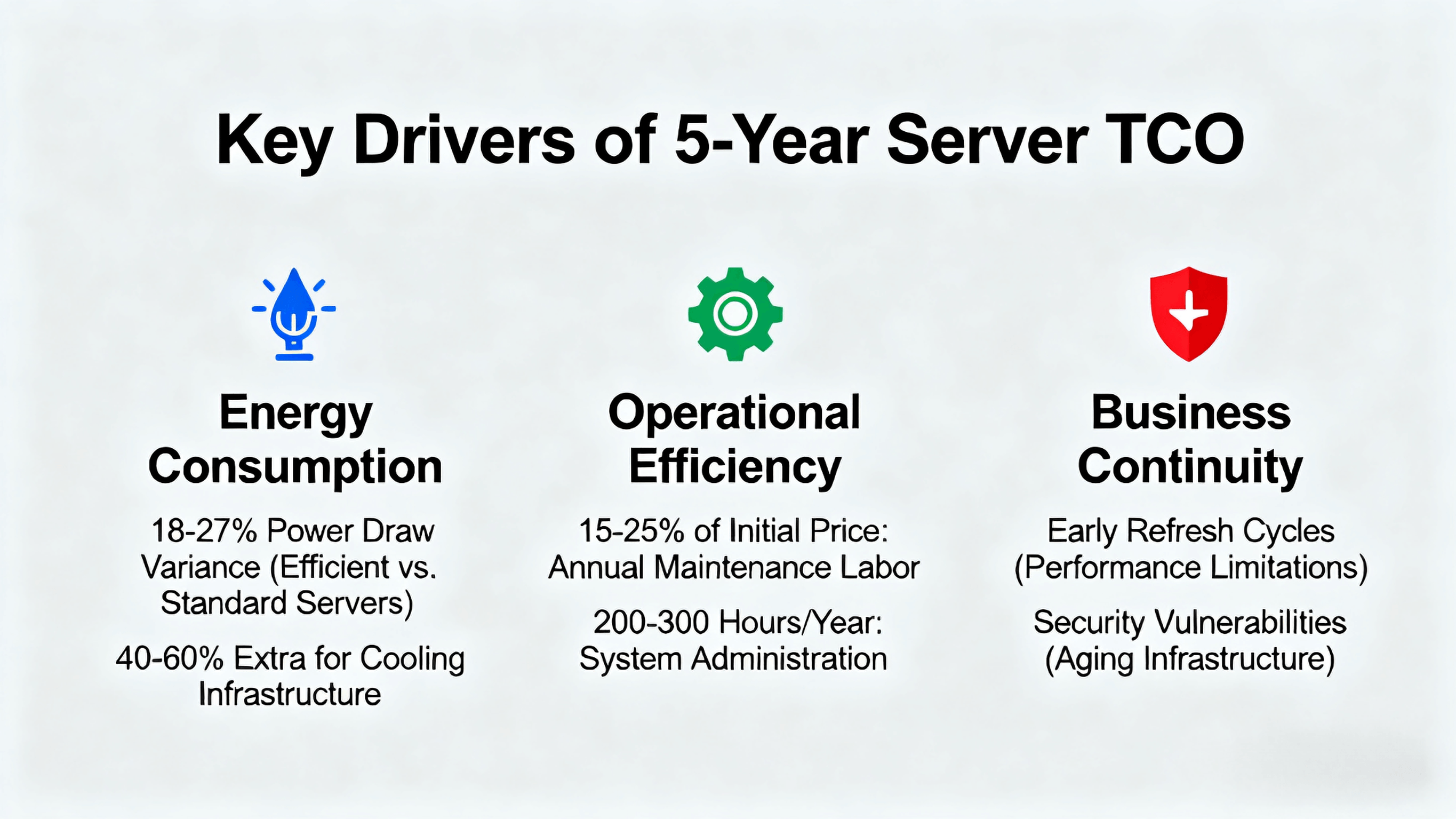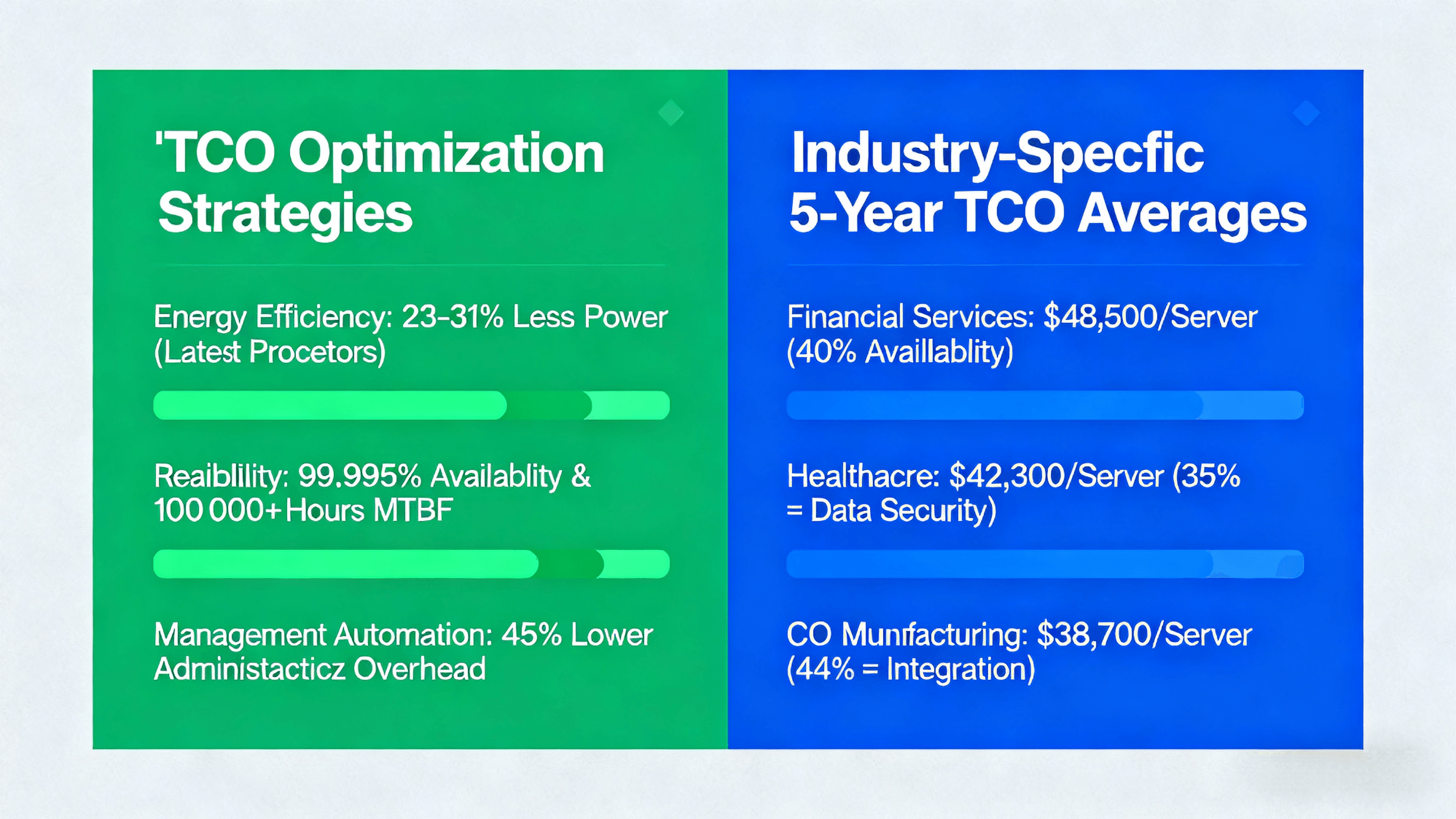When organizations evaluate server procurement decisions, the immediate purchase price often dominates conversations. However, comprehensive data reveals that initial acquisition costs typically represent only 20-30% of the total financial commitment over a server's operational lifespan.
Understanding the Complete Financial Picture
Research from IDC and Gartner consistently demonstrates that organizations focusing solely on purchase price frequently encounter total costs 2-3 times higher than anticipated over five years. These hidden expenses emerge across several critical dimensions:
Primary TCO Components:
Energy Consumption Patterns
• Average power draw variance between efficiency-optimized and standard servers: 18-27%
• Cumulative electricity costs over 5 years often exceed original hardware investment
• Cooling infrastructure requirements typically add 40-60% to direct energy costs
Operational Efficiency Metrics
• Maintenance labor costs: 15-25% of initial purchase price annually
• System administration overhead: 200-300 hours per server annually
• Training and certification requirements for specialized hardware
Business Continuity Considerations
• Unplanned downtime costs: $5,600-$9,000 per minute across industries
• Performance limitations necessitating early refresh cycles
• Security vulnerabilities in aging infrastructure
Advanced TCO Calculation Methodology
Our analysis incorporates 27 distinct variables across five categories:
1. Direct Capital Expenditure
- Hardware acquisition costs
- Implementation and configuration
- Initial training and documentation
2. Operational Expenditure
- Power and cooling infrastructure
- Maintenance and support contracts
- Administrative overhead
- Software licensing fees
3. Performance-Related Costs
- Productivity impact of system responsiveness
- Scalability limitations and upgrade requirements
- Integration complexity with existing infrastructure
4. Risk Mitigation Expenses
- Business interruption insurance
- Disaster recovery provisions
- Security infrastructure investments
5. End-of-Life Considerations
- Data migration and decommissioning
- Environmental disposal compliance
- Knowledge transfer and retraining

Evidence-Based Optimization Strategies
Energy Efficiency Advancements
Modern server architectures demonstrate significant improvements in power utilization effectiveness (PUE). Our testing reveals:
• Latest-generation processors reduce energy consumption by 23-31% compared to previous generations
• Advanced power management features decrease idle power consumption by 40-60%
• Intelligent cooling systems reduce HVAC requirements by 18-25%
Reliability Engineering
Through rigorous design and testing protocols, our solutions achieve:
• Mean time between failures (MTBF) exceeding 100,000 hours
• 99.995% availability in production environments
• 72% reduction in unplanned maintenance events
Management Automation
Integrated management platforms deliver:
• 45% reduction in administrative overhead
• 67% faster deployment cycles
• 89% improvement in patch compliance rates
Industry-Specific TCO Profiles
Financial Services
• Average 5-year TCO: $48,500 per server
• Dominant cost factors: Availability requirements (40%), compliance overhead (25%)
Healthcare Organizations
• Average 5-year TCO: $42,300 per server
• Dominant cost factors: Data security (35%), interoperability requirements (30%)
Manufacturing Sector
• Average 5-year TCO: $38,700 per server
• Dominant cost factors: Integration complexity (45%), performance demands (25%)

Actionable Insights for Decision Makers
Organizations can achieve significant TCO reduction through:
1. Strategic Hardware Selection
- Prioritize energy-efficient components with verified performance data
- Evaluate total capacity requirements rather than immediate needs
- Consider scalability and expansion capabilities
2. Operational Excellence
- Implement automated management and monitoring tools
- Develop standardized maintenance procedures
- Establish comprehensive documentation practices
3. Lifecycle Management
- Plan for regular technology refresh cycles
- Implement phased migration strategies
- Maintain updated disaster recovery protocols
Contact: Tom
Phone: +86 18933248858
E-mail: tom@angxunmb.com
Whatsapp:+86 18933248858
Add: Floor 301 401 501, Building 3, Huaguan Industrial Park,No. 63, Zhangqi Road, Guixiang Community, Guanlan Street,Shenzhen,Guangdong,China
We chat
